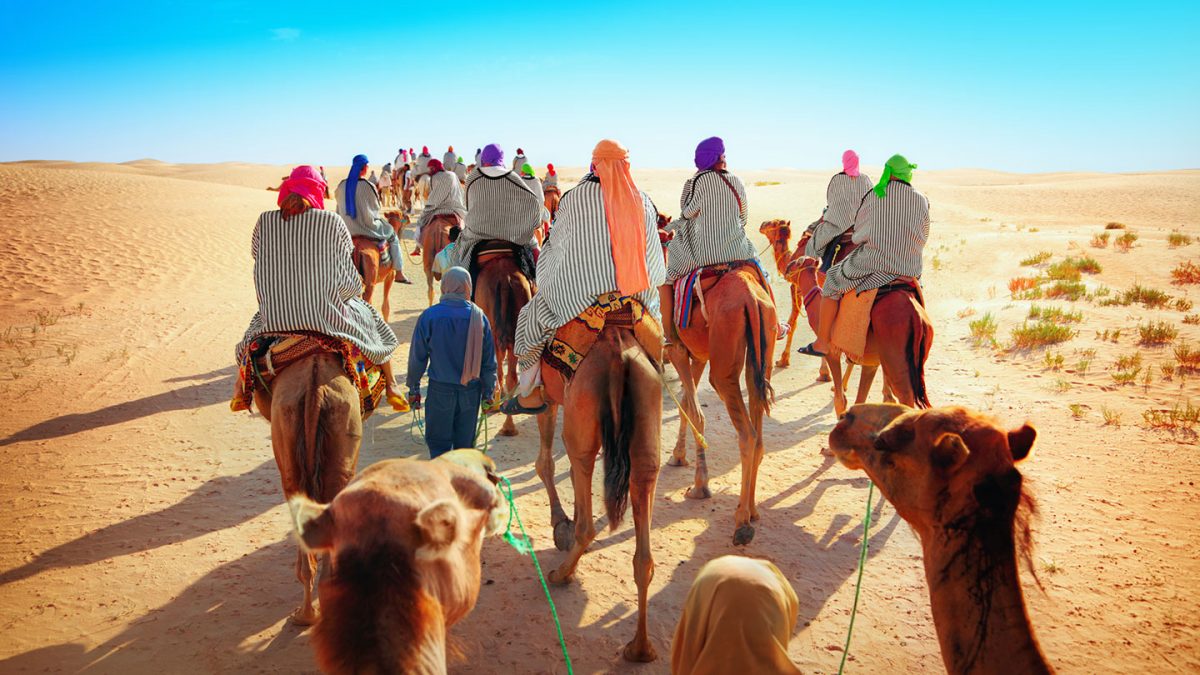
The Kingdom of Morocco might be just over 3 hours from London by plane but the exotic and unfamiliar, sights, sounds and smells, deeply traditional culture and diversity and contrasts in landscape make it feel very far from Europe.
In Marrakech the labyrinth of winding alleyways of the souks in the ancient Medina assault your senses. The narrow streets are chaotic and vibrant in terms of colour and energy. They team with hagglers, hustlers, heavily laden donkeys, hand carts and scooters. There is a surprise around every corner and they sell just about everything you could imagine: fragrant spices, glassware, pottery, leather goods, lanterns, olives, mysterious lotions and potions – need I go on! The central square, Djemma el Fna, is filled with entertainers: snake charmers, jugglers, musicians and acrobats. Pay attention though, unless you want a monkey on your head or snake around your neck.
You could spend days exploring this rabbit warren of traders, in fact it might take you that long to find your way out, but there is so much more to discover in this mystical kingdom. As you leave Marrakech the unplanned sprawl of the city is apparent but so too are the attempts of the government to improve housing and remove the slums. The success of the new towns is debatable and on driving through they appear bleak and deserted when compared to the teaming streets of Marrakech.
Heading south from Marrakech takes you across the Marrakech Plain and in to the High Atlas Mountains across the spectacular Tizi-n-Tichka Pass. The contrasts in the physical and human landscapes are dramatic and the backdrop of the fold mountains scattered with pisé Berber villages and farmland brings home the reality of trying to scrape a living from this harsh yet beautiful environment. A chance to ponder the timescales involved in the evolution of both the landscape and the communities as you wide your way across the mountains.
Ouarzazate is a surprisingly upmarket town with the huge Taourirt Kasbah at its heart as well as playing host to the country’s film industry; boasting a number of film studios. A visit to the nearby Kasbah Ait Benhaddou might feel strangely familiar until you realise it’s been the backdrop for numerous movies from Lawrence of Arabia, Jewel of the Nile, Gladiator, the Prince of Persia and it’s even been used for Game of Thrones.
Travelling eastwards from Ouarzazate takes you along the Dadès Valley, threaded between the High Atlas to the north and the Jebel Sarhro range to the south. The dry river valleys and low level of the reservoir bring home the reality of how scarce a resource water is in Morocco and the desperate need for conservation and management. The contrasts between the lush greenery of the irrigated date palmeries (although some of these trees were looking under considerable stress) and the stark, dusty surroundings is immediately evident. The plight of the traditional subsistence farmer appears even more fraught and under threat and brings home the precarious nature of relying on the land in such a severe and unsympathetic environment.
Water, though, can be both a blessing and a curse and it is evident from the deeply incised river channels and imposing gorges that at times rivers can be a force to be reckoned with. Flash floods are not uncommon and can be both devastating and deadly when they strike. The bare, vertical rock walls of the Todra Gorge rise to around 300m and are testament to the impressive erosive power of Morocco’s rivers.
Continuing on an easterly direction will lead to the Sahara! This will reveal yet more stunning vistas and yes, eventually, the sea of sand we all associate with the Sahara Desert but this will have to wait until my next blog…